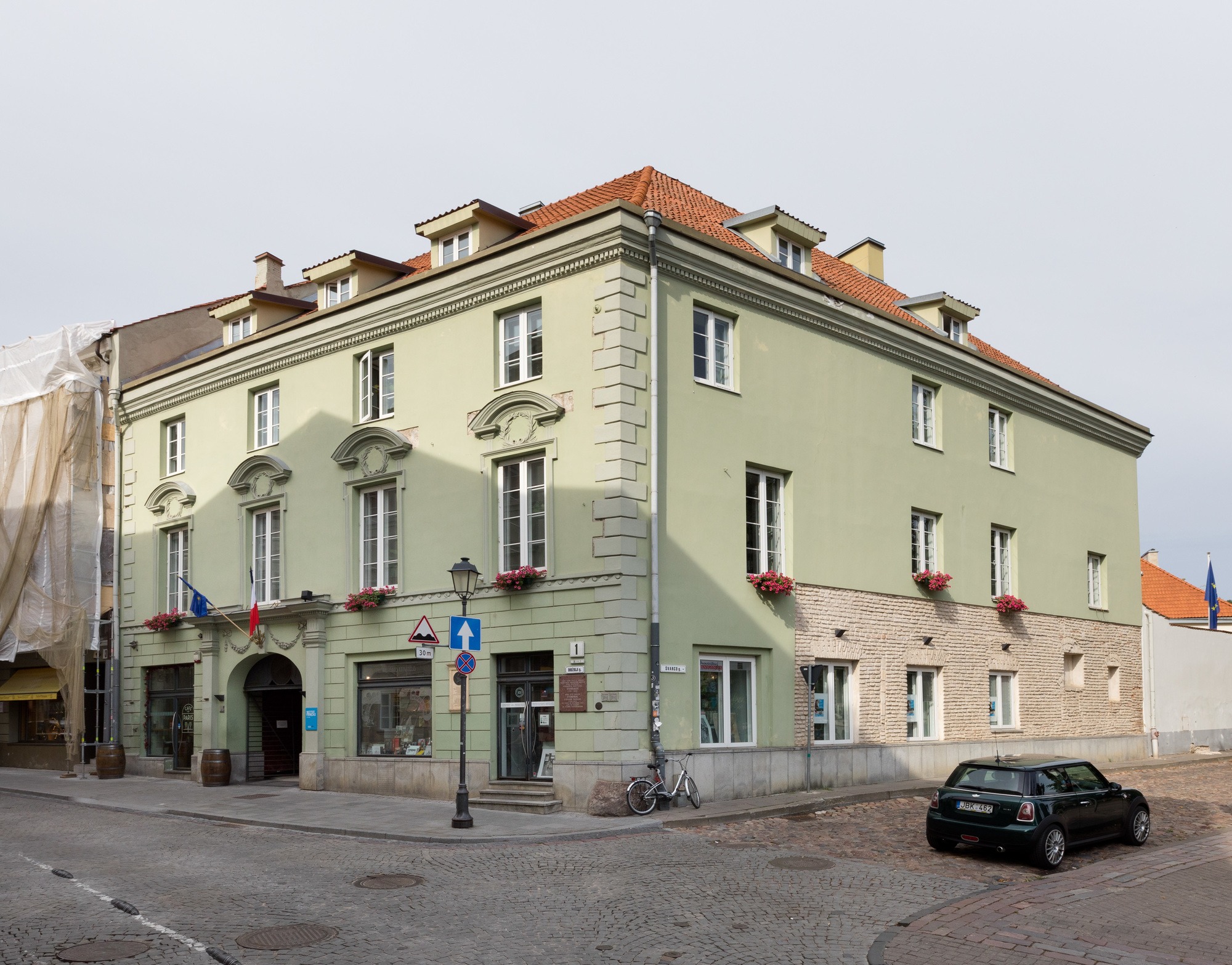
1 Didžioji Street. 2019
Photographer Tomas Kapočius
Lithuanian Art Museum
In the early 1500’s, there was a number of masonry and wooden houses owned by different people on the plot. In the late 1500’s–early 1600’s, the entire possession went over to the Grand Duchy of Lithuania swordsman Dimitry Khalecki, who merged the buildings into one. In 1636, the buildings were sold to the Jesuit College and remained its ownership until the order’s suppression in 1773. In 1804, the building was purchased by Vilnius University. It became the home for University professors, including doctor Joseph Frank, after whom the building became known as the Frank House, and who lived there with his wife, singer Christina Gerhardi-Frank; sculptor Kazimierz Jelski; chemist and physician Jędrzej Śniadecki, his brother mathematician, astronomer and University rector Jan Śniadecki; architect Tomasz Tyszecki. Graphic artist Izidor Weiss had a studio in the house. Frenchman Marie-Henri Beyle, who was an intendant for Napoleon at the time and rose to fame later as an author known as Stendhal, had a short stay in the house in 1812. The house underwent several reconstructions in the 19th century, with the current façade added in 1824. A bookshop owned by Fryderyk Moritz operated on its ground floor. In the 20th century, the type of the building remained unchanged, with retail premises being on the ground floor and residential flats on the upper floors. Since the restitution of independence, the building has been used by the Embassy of France, with the part facing Didžioji Street hosting the French Institute.
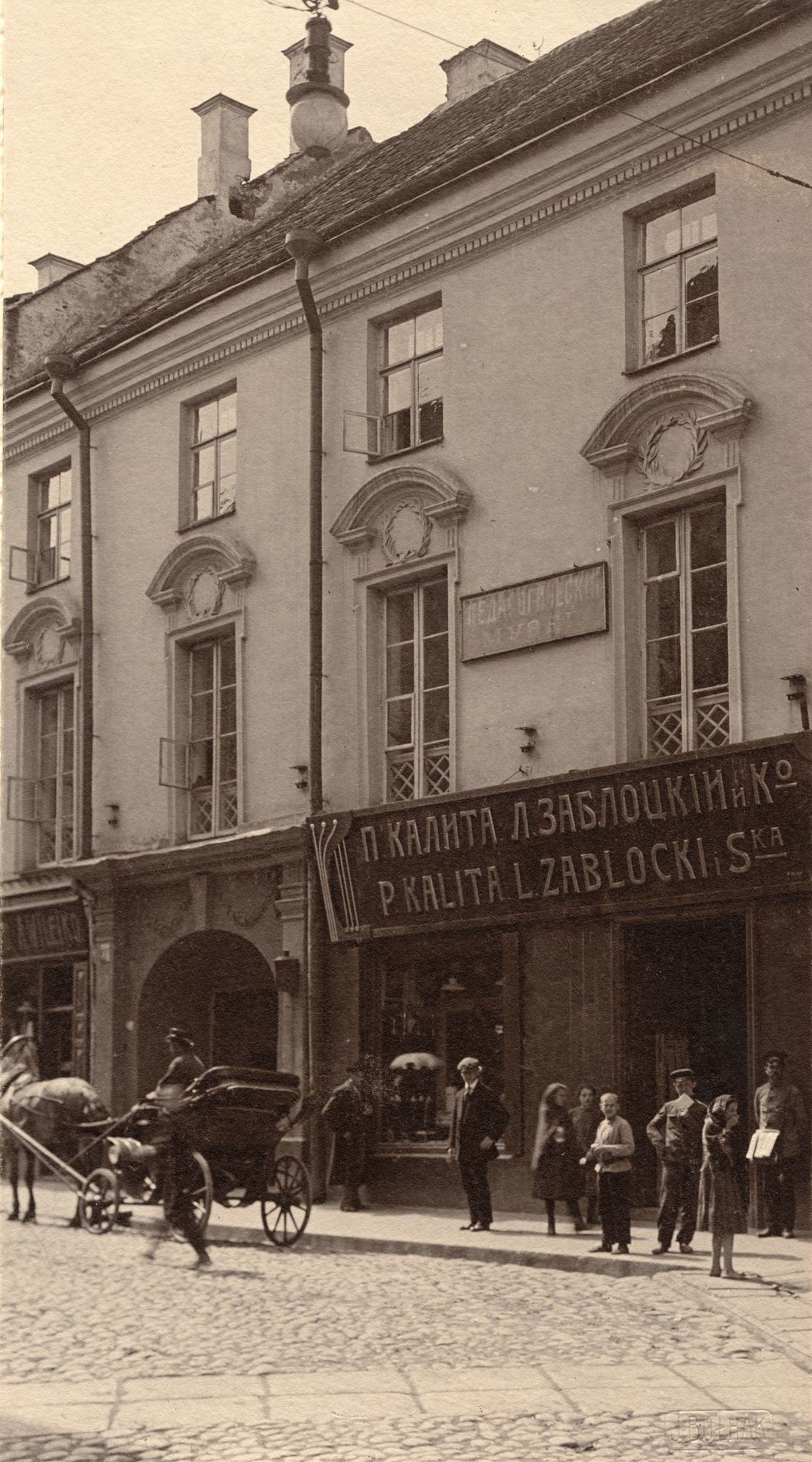
Jan Bułhak (1876–1950)
Facade of the House on Pilies Street [1 Didžioji Street]. 1914
Lithuanian Art Museum
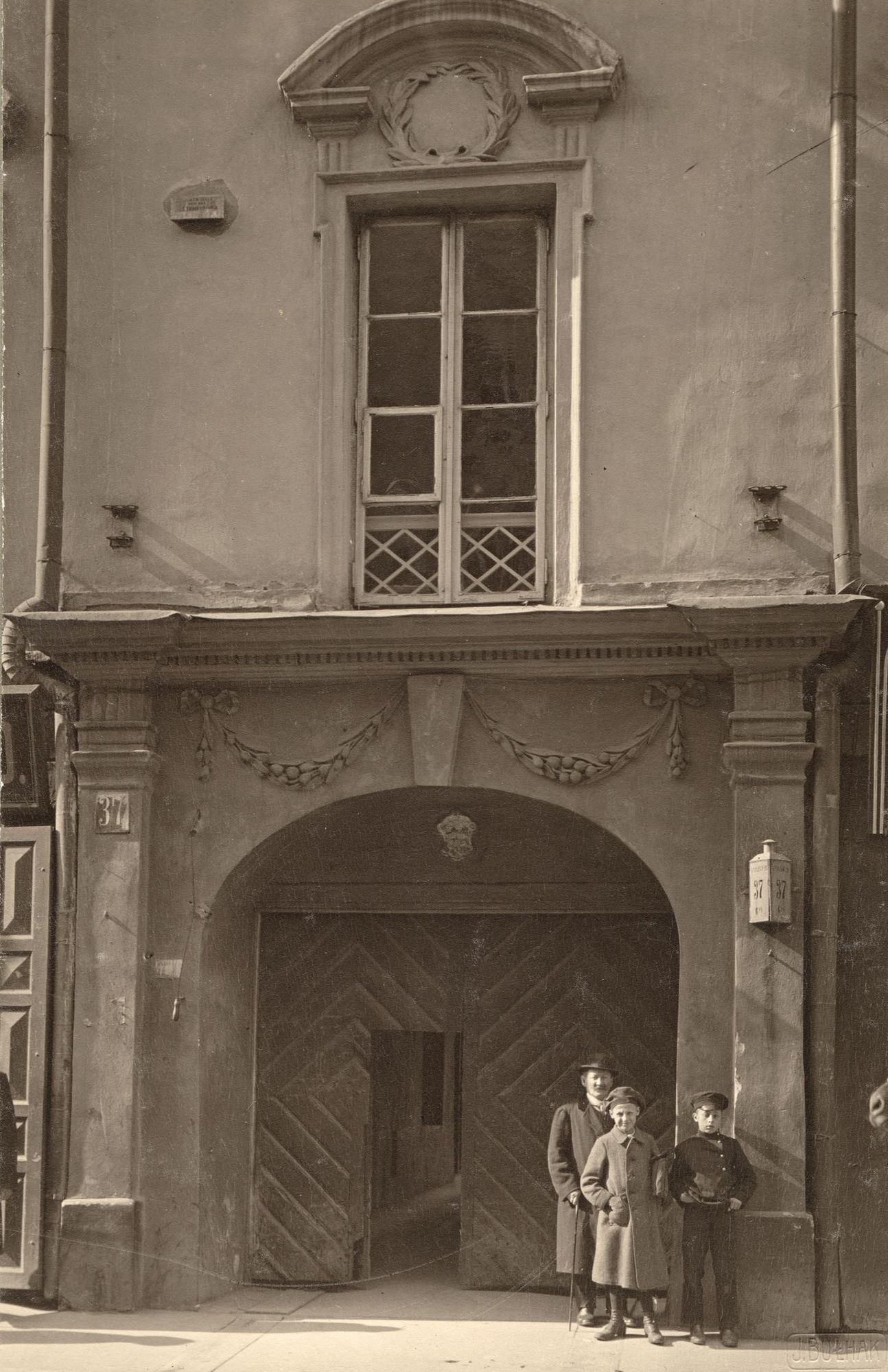
Jan Bułhak (1876–1950)
Gate of the House on Pilies Street [1 Didžioji Street]. 1914
Lithuanian Art Museum

Jan Rustem (1762–1835)
Professor Joseph Frank. 1810’s.
Oil on canvas
Lithuanian Art Museum
JOSEPH FRANK (1771–1842)
Doctor, Medicine PhD, patron of arts. Moved from Vienna to Vilnius in 1804 and settled in the house on Didžioji st. (currently 1 Didžioji st.). Professor at Vilnius University in 1805–1823. Together with his father Johann Peter Frank, initiated the founding of the Vilnius Medical Society, Vilnius University Therapeutic Clinic across the street (currently 10 Didžioji st.), Surgical Hospital, Vaccination and Maternity institutes. Pioneered research of the effect of climate and other geographical conditions on human health as well as research of citizen mortality and morbidity. Worked extensively in the field of preventive healthcare. Improved the teaching programme of medicine at Vilnius University, his students went on to become scholars and physicians. Major works: Practical Medical Advice (Praxeos medicae universae praecepta, 14 volumes, 1811–1843); Pathological Medicine (Pathologie medicale, 6 volumes, 1835–1843). Left Lithuania in 1823, allegedly due to health deterioration. Settled with his wife by the Lake Como, Italy, where he died. Buried in a 20-metre-high pyramid of his own design.
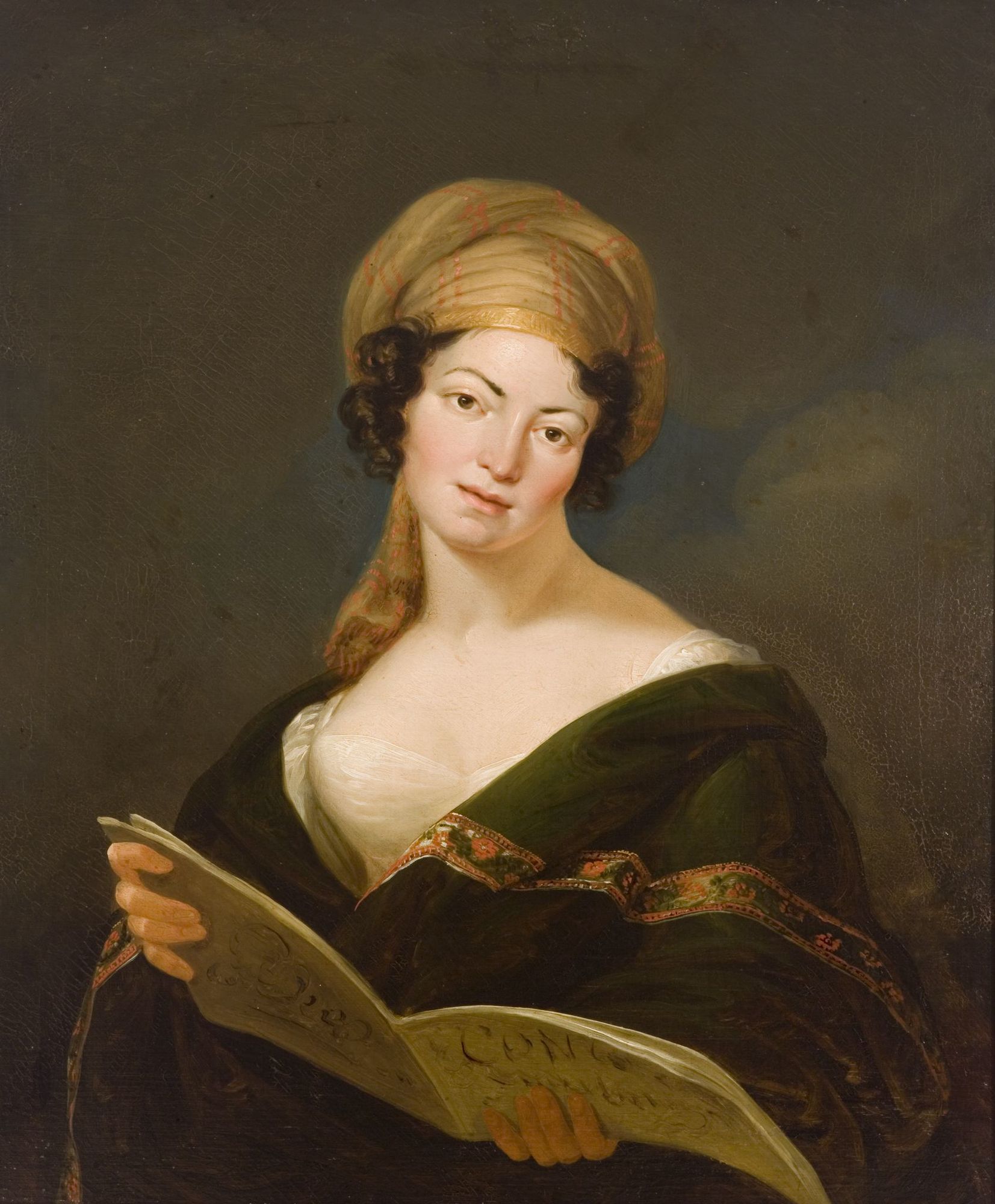
Jan Rustem (1762–1835)
Christina Frank. First half of the 19th century
Oil on canvas
Lithuanian Art Museum
CHRISTINA GERHARDI-FRANK (around 1780–after 1832)
Singer (soprano). Studied singing in Vienna under the best known musicians of the day. Her great voice and artistic charisma led to early recognition. Sang in the 1798 premiere of Joseph Haydn’s oratorio The Creation in Vienna (conducted by Haydn himself). Performed together with Ludwig van Beethoven. Lived in Vilnius, on Didžioji Street (currently 1 Didžioji st.) with her husband, doctor Joseph Frank. Performed in charity concerts and operas, worked as a teacher. Thanks to her and her husband, The Creation was performed in Vilnius City Theatre, located in the Town Hall (currently 31 Didžioji st.) on February 17–18, 1809. Christina sang the parts of Gabriel the Archangel and Eve. The performance was long hailed as one of Vilnius’ biggest cultural events.
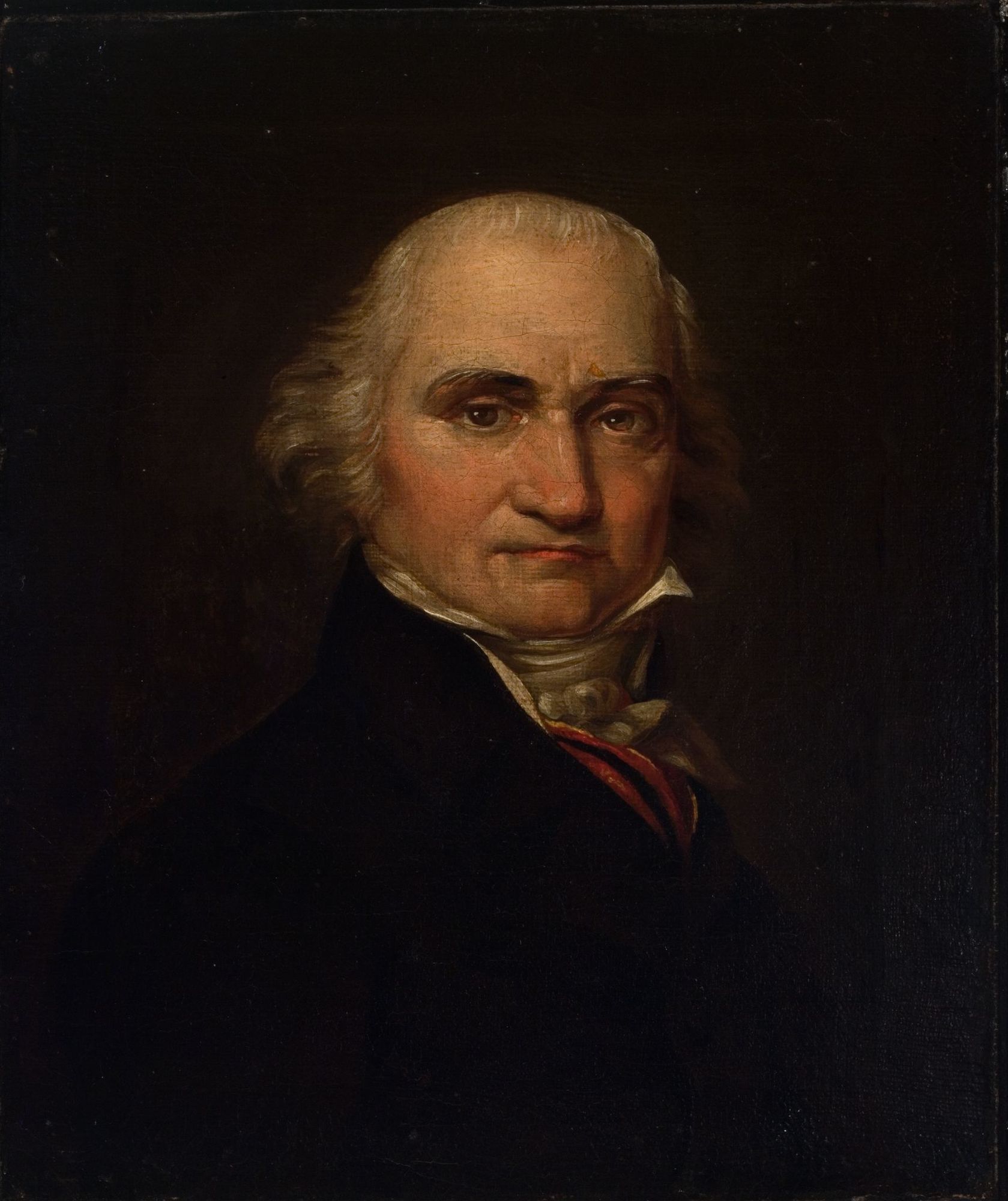
Jan Rustem (1762–1835)
Jan Śniadecki. 1823
Oil on canvas
Lithuanian Art Museum
JAN ŚNIADECKI (1756–1830)
Astronomer, mathematician, philosopher. Graduated from Krakow Academy, studied mathematics, physics, astronomy, military engineering in Germany, Holland, France, England. Came to Vilnius in 1806 to work at the university and lived in a flat on Didžioji Street (currently 1 Didžioji st.). Head of Vilnius University Astronomy Observatory in 1807–1825. Rector of Vilnius University in 1807–1815. Correspondent member of St. Petersburg Academy of Sciences from 1811. Major works: Geography, or Mathematical and Physical Description of the Earth (Geografja czyli opisanie matematyczne i fizyczne Ziemi, 1804), Spheric Trigonometry (Trygonometrja kulista, 1817), The Philosophy of the Human Mind (Filozofiia umysłu ludzkiego, 1822). A lunar crater and an asteroid Sniadeckia were named in his honour.
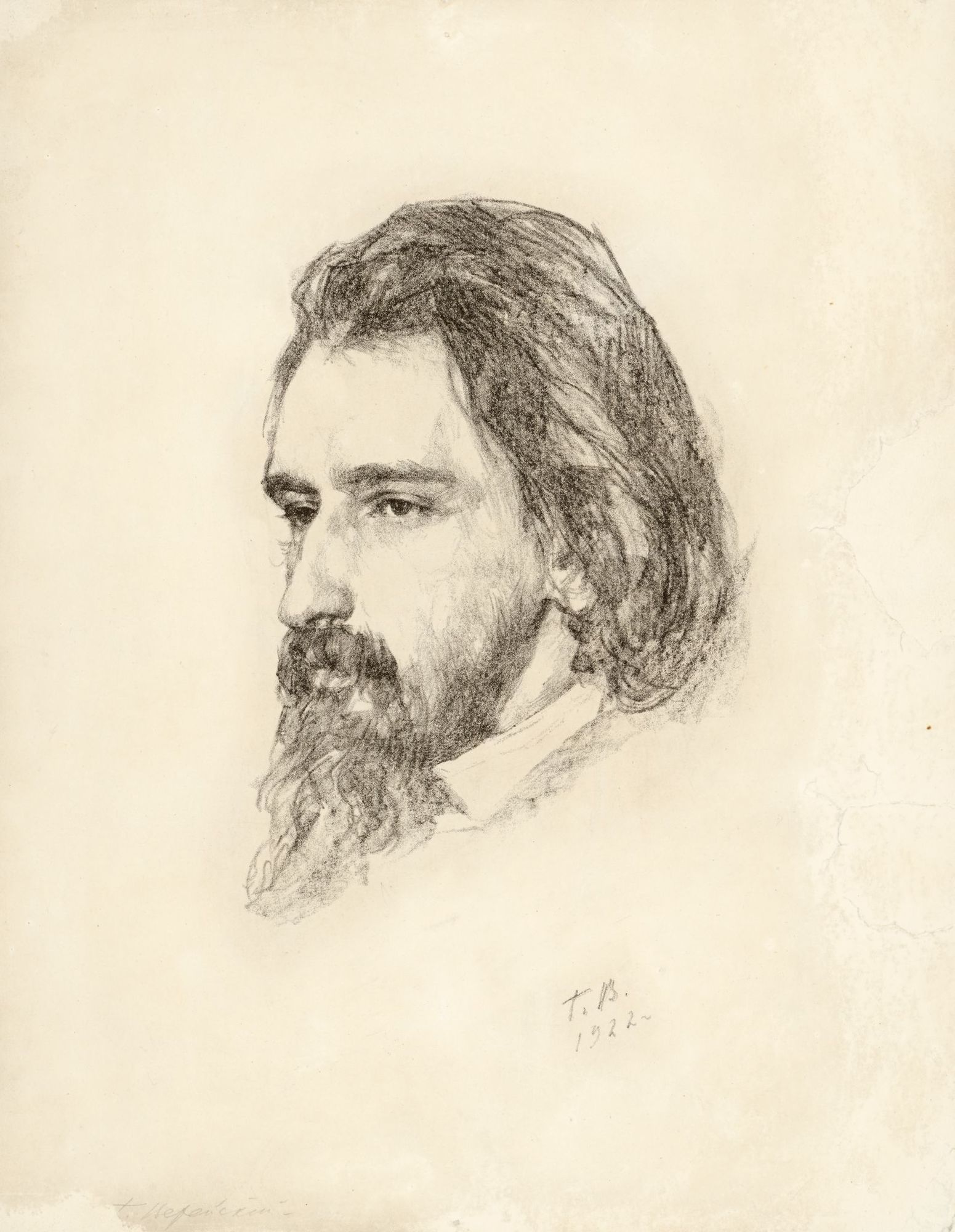
Georgij Vereiskij (1886–1962)
Lev Karsavin. 1922
Paper, lithograph
Lithuanian Art Museum
LEV KARSAVIN (1882–1952)
Russian and Lithuanian cultural historian, philosopher, History and Philosophy PhD. Taught at Saint Petersburg University from 1909 with several hiatuses. Appointed as professor in 1918. University rector in 1920–1921. Expelled from Soviet Russia for opposition to the Bolshevik regime in 1922, lived in Berlin until 1926. Took part in Eurasian movement. Moved to Paris, where he taught at the Russian Theological Academy. Lived in Kaunas in 1928–1940, taught at Vytautas Magnum University. Lived in Vilnius on Didžioji street (currently 1 Didžioji st.) as a professor at Vilnius University. Worked as an art expert for the Vilnius Art Museum in 1944 and was the Head of the Museum in 1945–1949. Openly expressed his opposition to Stalinism and the Soviet regime. Arrested in 1949, sent to a concentration camp in Abez, Russia in 1950. Authored over 20 philosophy and poetry works, including History of European Culture (5 volumes, 1931–1937), About Personality (O lichnosti, 1929), Poem on Death (Poema o smerti, 1931), etc. Characteristic to his works is the synthesis of theological reasonings and philosophical questions.
ŠARŪNAS BARTAS (born 1964)
One of the most famous Lithuanian filmmakers in the world, producer, cinematographer, screenwriter, actor. Recipient of the 2001 Lithuanian National Prize for Culture and Arts. In 1898, he founded the first independent film studio Kinema, which has produced dozens of documentary and fiction films that were presented in the major film festivals around the globe, such as Berlin, Cannes, Venice, and won some prestigious awards. Bartas was the first in Lithuania to go into international co-production and collaborations with French, German, Portuguese producers. His directorial debut was a 1985 documentary Tafolaria. His 1989 film In the Memory of a Day Gone By featured a unique associative cinematic language, free-flowing structure and minimalistic form. He elaborated his auteur style in his later works: Three Days (1991), The Corridor (1994), Few of Us (1995), The House (1997), Freedom (2000), etc. In 2016, a retrospective of his works was presented at the Centre Pompidou, Paris. For a period of time he lived and worked at 1 Didžioji st.